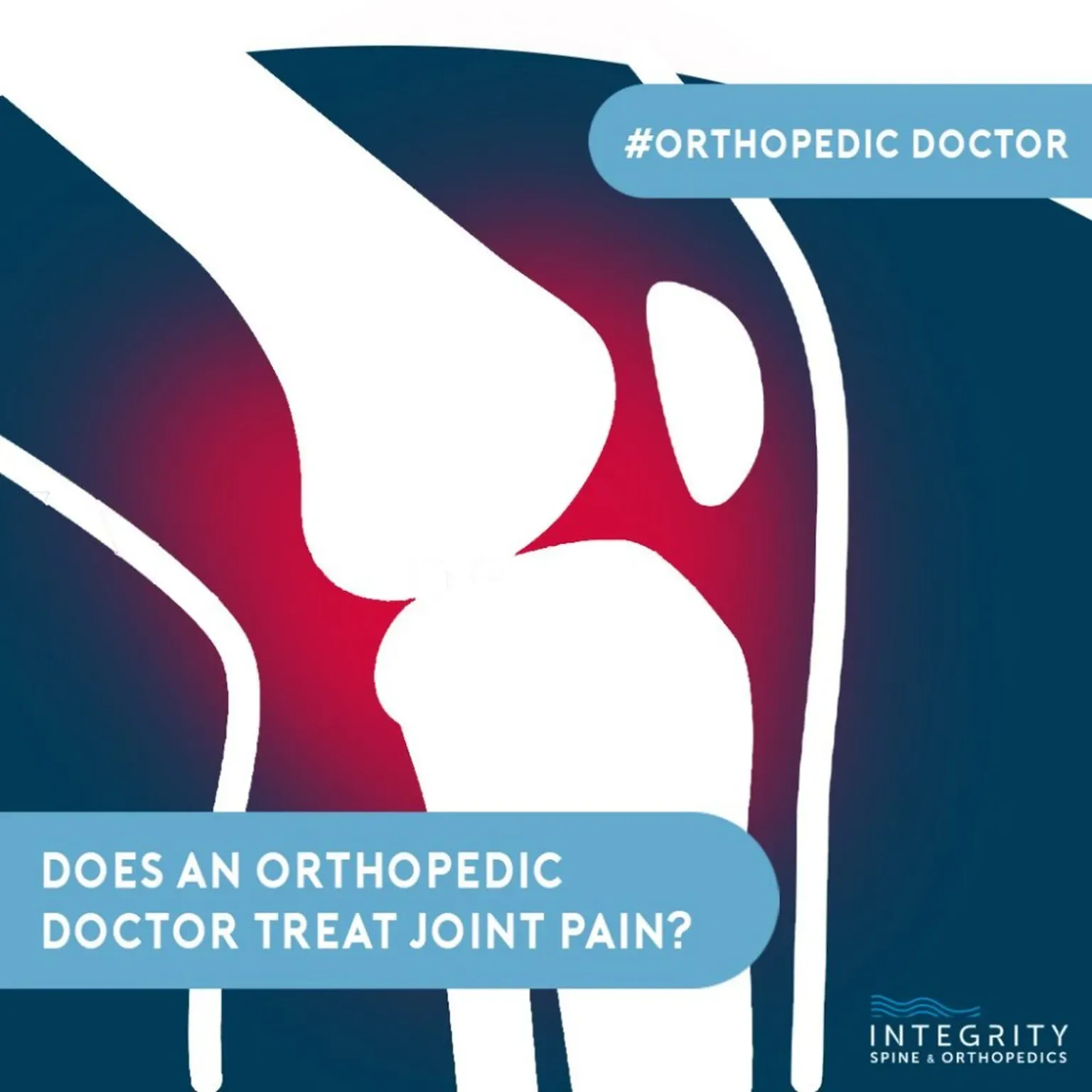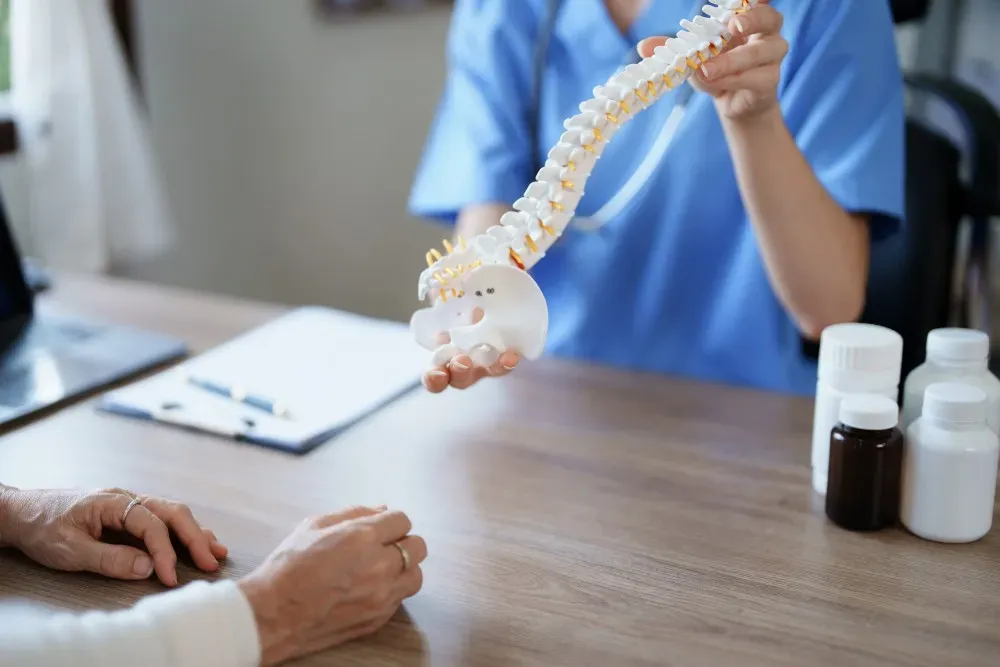Neurosurgery & Orthopedic Surgeons in Jacksonville

Does an Orthopedic Doctor Treat Joint Pain?
If you’re living with achy knees or hips, morning stiffness that makes it hard to get out of bed, or pain when climbing stairs, you may be wondering what to do next.
If you’re living with achy knees or hips, morning stiffness that makes it hard to get out of bed, or pain when climbing stairs, you may be wondering what to do next. Should you see a doctor for a swollen joint? Mild joint pain? Joint pain that’s been ongoing for several weeks?
The answer is yes to all of the above, and the doctor you need to see is an orthopedic doctor. Learn more about the role an orthopedist plays in joint pain, and when it’s time to make an appointment with an orthopedic specialist.
WHAT DOES AN ORTHOPEDIC DOCTOR DO?
An orthopedic doctor identifies, diagnoses and treats all diseases, injuries and conditions that affect the musculoskeletal system. The musculoskeletal system includes the bones of the skeleton, plus all the structures that support and stabilize the skeleton — joints, muscles, tendons, ligaments, cartilage and nerves. Because all the components of the musculoskeletal system are connected, damage or an injury to one component can impact multiple other structures within the system.
At Integrity Spine and Orthopedics, our board-certified orthopedic doctors diagnose and treat a wide range of acute and chronic musculoskeletal conditions, including joint pain. The leading cause of joint pain is osteoarthritis, the most common form of arthritis. Osteoarthritis develops when the cartilage covering the ends of bones starts to erode, leading to pain, inflammation and swelling in the joints. As osteoarthritis progresses, the disease causes gradual degeneration of the cartilage, joint, underlying bone and connective soft tissues.
Other injuries and conditions that commonly cause joint pain include rheumatoid arthritis, ankylosing spondylitis, gout, bursitis, soft tissue injury or inflammation (like tendinitis), and dislocations. Because joints enable smooth, fictionless movement, joint damage that develops from an injury or disease can significantly impact your ability to move.
WHEN TO SEE AN ORTHOPEDIST FOR JOINT PAIN
The primary symptoms of a joint injury or condition are pain, stiffness, swelling and loss of movement and range of motion. Some causes of joint pain — like acute tendinitis or bursitis — resolve within a few weeks with rest, ice and medications. Other causes of joint pain — like arthritis — are chronic and cause long-term pain and symptoms.
It’s time to see an orthopedist for an evaluation if you’re experiencing the following:
- Joint pain or symptoms that occur several times in a month, or consistently for several weeks
- Pain, swelling and stiffness in one or more joints
- Joint stiffness that’s worse in the morning and after periods of inactivity
- Joints that are red, tender or warm to the touch
- Difficulty moving a joint as much as usual
- Pain that prevents you from performing normal daily activities
The symptoms listed above may be early warning signs of arthritis. Arthritis pain and symptoms progress over time, so it’s important that you see an orthopedist as soon as possible once symptoms begin. Early treatment and lifestyle changes can help slow the progression of the disease.
TREATMENTS FOR JOINT PAIN
There are multiple treatments your orthopedist might prescribe for joint pain, depending on its cause. If your pain has a known cause, R.I.C.E. (rest, ice, compression, elevation) is the first line of treatment for an acute musculoskeletal injury. Afterward, your doctor might recommend a course of physical therapy to help rehabilitate your injured joint and regain strength and range of motion.
If your joint pain is caused by arthritis or another long-term condition, the goal of treatment will be to reduce pain, preserve joint strength and motion, and slow the progression of disease. Your orthopedic treatment plan might include:
- Medications. Over-the-counter anti-inflammatories (NSAIDs) can help reduce pain, swelling and inflammation. Topical solutions with anesthetics or capsaicin can help relieve tender, achy joints. If your pain is severe, your doctor might prescribe stronger medications.
- Injections. Cortisone injections provide temporary inflammation relief and pain relief and allow you time to regain strength and mobility. Hyaluronic acid injections lubricate joints and facilitate less painful movement.
- Physical therapy. A physical therapy regimen can help strengthen your muscles and joints, improve range of motion, and increase flexibility, balance and endurance.
- Exercise. Outside of physical therapy, a regular exercise regimen can help preserve joint strength and mobility. Low-impact exercises like walking, swimming, water aerobics, using an elliptical, bicycling, and yoga build strength while being easy on your joints.
- Weight management. Extra pounds place more stress and pressure on your joints, speeding up the process of degeneration. Work with your doctor to create a healthy weight management plan.
If you’re suffering from severe arthritis or a significant joint injury, you may need surgical treatment under the care of an orthopedic surgeon. There are several surgical options for arthritis treatment, including total joint replacement. If surgery is an option for you, your orthopedic surgeon will walk you through everything you need to know.
INTEGRITY SPINE AND ORTHOPEDICS TREATS JOINT PAIN AND ARTHRITIS
At Integrity Spine and Orthopedics, our board-certified orthopedic surgeons treat a wide range of back, neck, spine, joint and soft tissue injuries. If you’re living with chronic pain and loss of mobility from arthritis or another joint condition, our experienced orthopedic doctors can help.
We have a clinic conveniently located in Jacksonville, FL. Please call us or reach out online to schedule your first appointment.




